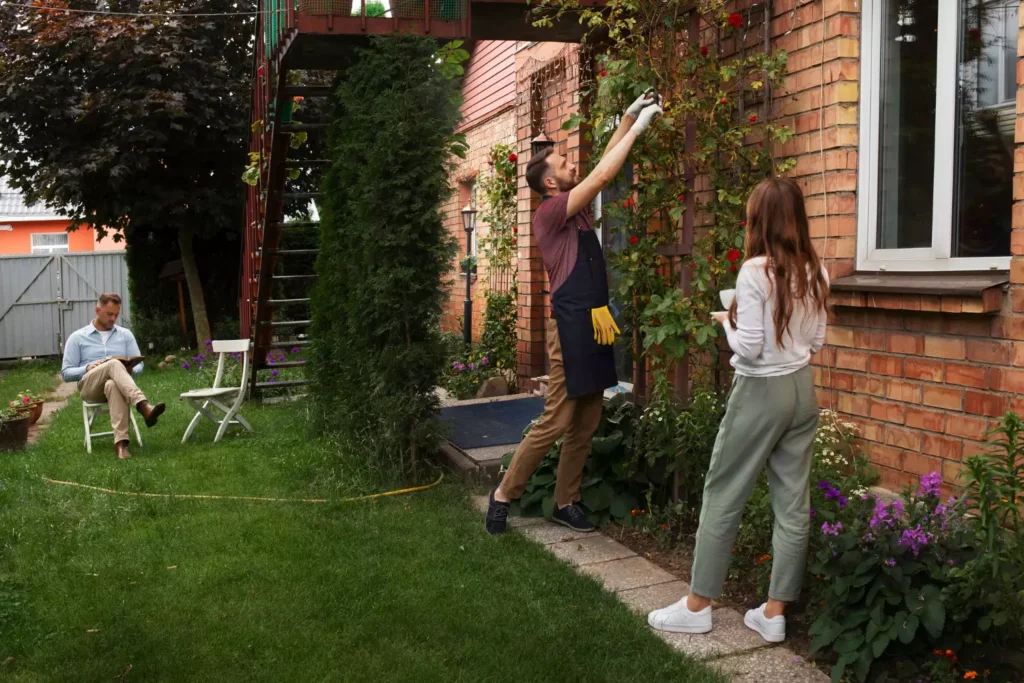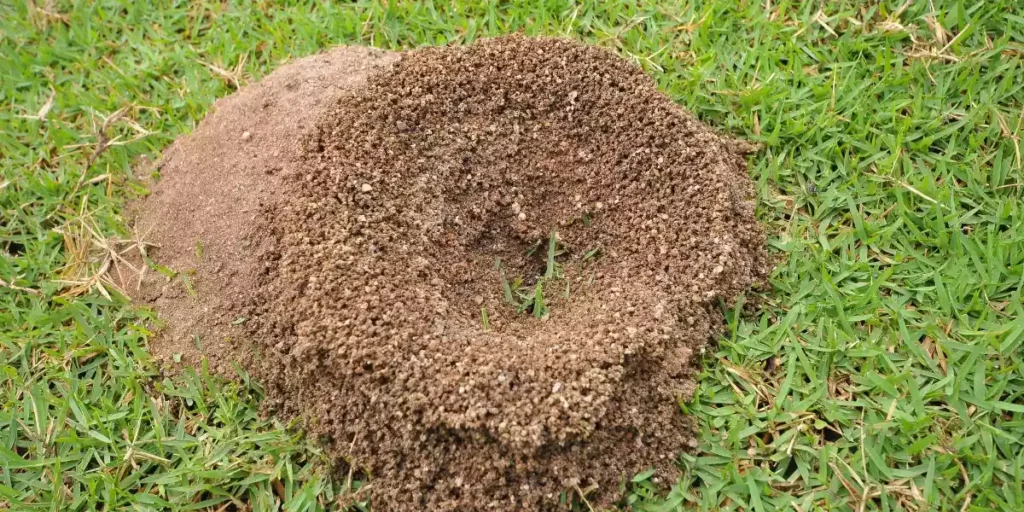Are you tired of battling pesky clover in your lawn? Well, your days of frustration are about to be over!
In this article, we’ve got the best lawn care tips to help you banish clover once and for all. Say goodbye to those stubborn little plants that love to invade your perfectly manicured turf.
With our expert advice, you’ll learn how to kill clover, prevent its growth, and keep your lawn looking lush and green. It’s time to take back control of your yard and enjoy a clover-free oasis.
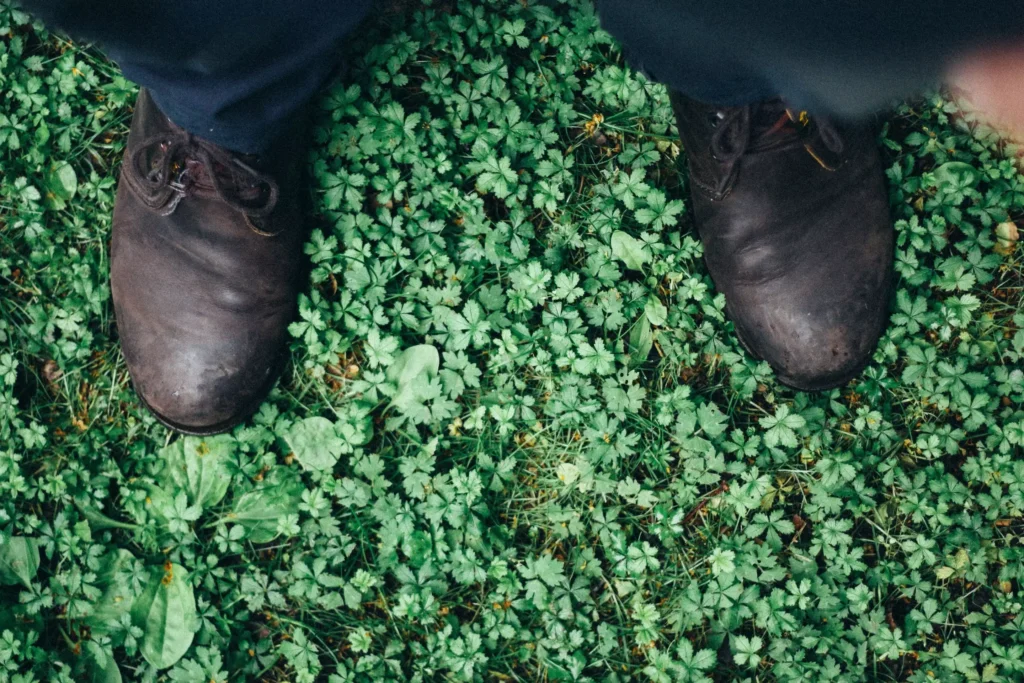
Key Takeaways
- Manual removal of clover by pulling it out, including the roots, is an effective method to get rid of clover in your lawn.
- Depriving clover of oxygen and sunlight by covering it with plastic sheeting can also kill it over time, but be cautious as it may also kill the grass underneath.
- Using a vinegar solution with water and dish soap can act as a natural weed killer when sprayed on clover patches, but it may damage the grass.
- Spreading organic fertilizer, using corn meal gluten, and maintaining high grass height through regular mowing can prevent clover growth in your lawn.
What is clover?
Clover, a small herbaceous plant with trifoliate leaves, is part of the legume family and can tolerate constant mowing on grassy lawns. It is a resilient plant that adds valuable nutrients to the soil. Clover is found worldwide, mainly in the temperate Northern Hemisphere, but also in South America and Africa. The leaves of clover are divided into three sections, giving it a distinctive appearance.
Clover has many benefits for lawns, including low-maintenance upkeep, the ability to fix nitrogen in the soil, and staying green throughout the summer. It also crowds out weeds and reduces the need for weed control. However, there are reasons why you might want to remove clover from your lawn, such as a preference for a uniform, manicured lawn or concerns about bees if you have allergies.
How to kill clover in your lawn?
Nitrogen boosting
Applying a nitrogen-rich fertilizer to the clover patches deters it from growing and spreading. Clover thrives in soil with low levels of nitrogen, so increasing the nitrogen content in the soil will discourage its growth.
You can choose between fast-release or organic fertilizers to get the job done. Fast-release fertilizers are quick and affordable, perfect for large areas with lots of clover. However, they can decrease soil quality over time.
On the other hand, organic fertilizers like cow manure, bone meal, and liquid kelp are better for the environment but take longer to kill the clover. You can find both types of fertilizers at garden and home-improvement stores.
Apply the fertilizer specifically to the problem areas to target the clover and prevent it from spreading throughout your lawn.
Mow higher than 3 inches
Mowing the grass at a height of 3 inches or higher can discourage the growth and spread of clover. When you mow your lawn at a higher setting, you give your grass a better chance to outcompete the clover.
Here are some tips to help you mow your lawn effectively:
- Adjust your mower height to 3 inches or higher
- Use a sharp mower blade to prevent damage to the grass
- Mow regularly to maintain the desired height
- Leave the grass clippings on the lawn as they act as a natural fertilizer
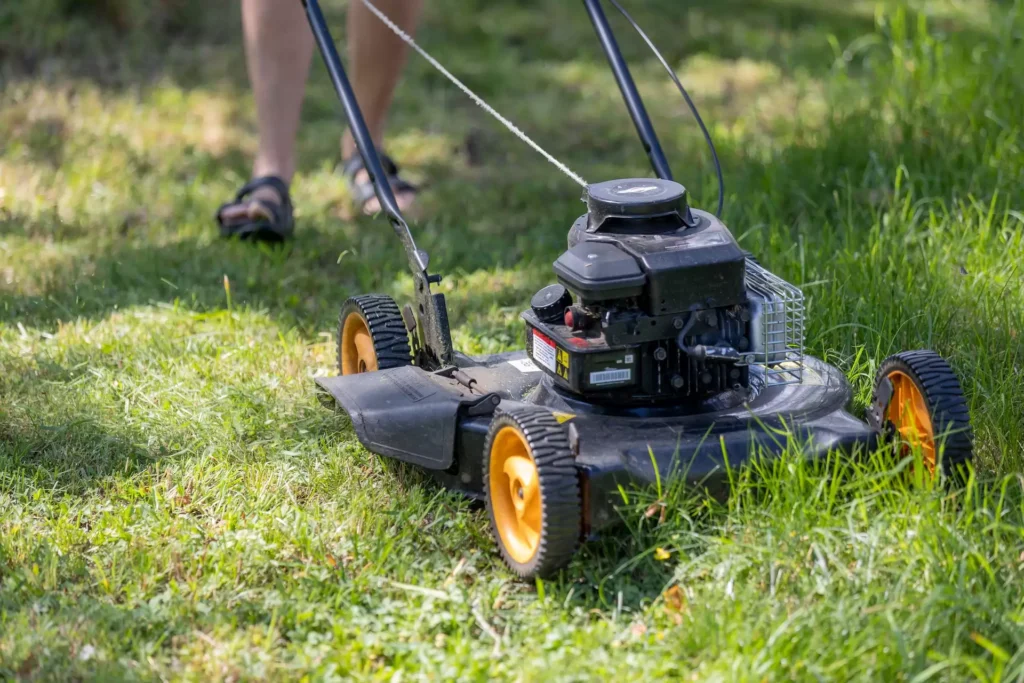
Herbicide
Using an organic herbicide is a good option for getting rid of clover without harming surrounding grass. When choosing an herbicide, look for one that is specifically designed for broadleaf weeds like clover. Effective herbicides against clover include 2,4-D, dicamba, MCPP, or triclopyr.
If you prefer organic methods, there are natural options available as well. When applying the herbicide, be sure to follow the instructions on the label carefully to avoid any damage to the grass blades. It may take multiple applications to completely eradicate the clover, so be patient and continue treating the affected areas as needed.
Using an organic herbicide can be an effective way to control clover and maintain a healthy and lush lawn.
A natural herbicide against clover – Vinegar
For a more environmentally friendly option, you can make a vinegar-based mixture to kill off the clover in your lawn. Here’s how to do it:
- Gather your materials:
- One cup of vinegar
- One cup of water
- One drop of dish soap
- Spray bottle
- Combine the vinegar, water, and dish soap in the spray bottle. Shake well to mix the ingredients.
- Locate the clover patches in your lawn and spray the mixture directly onto them. Be careful not to spray the surrounding grass.
- Repeat this process regularly for a couple of weeks. The vinegar will dry out the clover leaves and eventually kill the plant. The dish soap helps the mixture stick to the clover.
Using this natural herbicide can be an effective way to get rid of clover in your lawn while minimizing the use of chemicals.
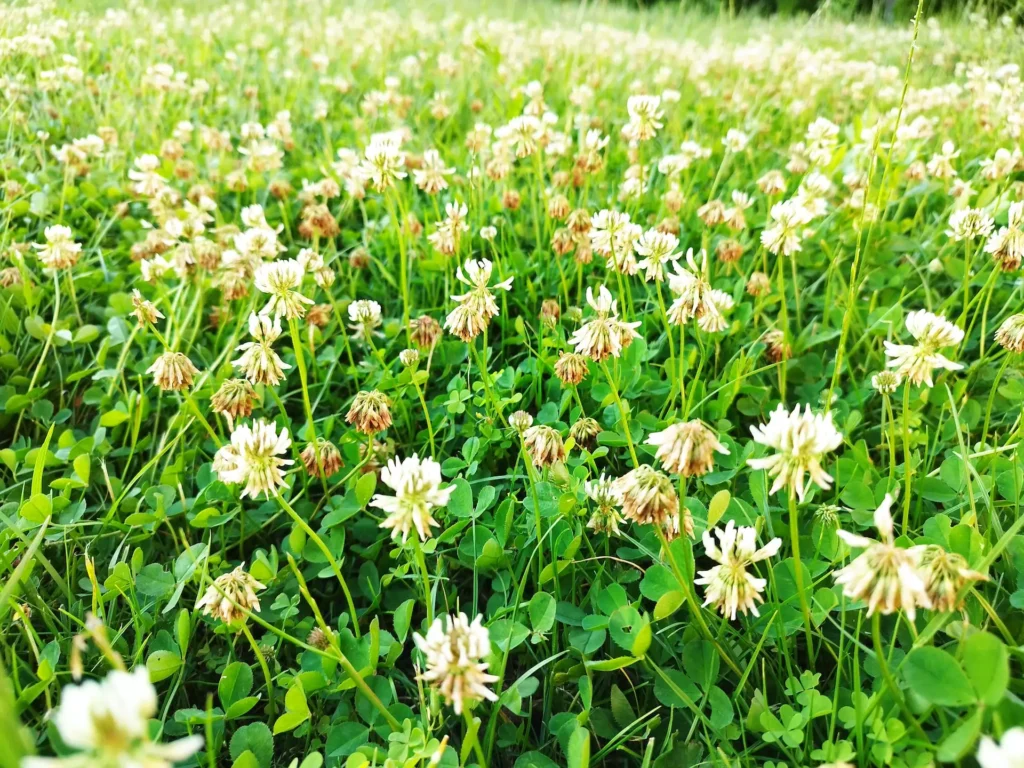
Corn gluten
Corn gluten is an organic pre-emergent herbicide that can prevent clover from growing and spreading. It works by releasing organic peptides that deter clover seeds from sprouting. However, it is important to note that corn gluten should not be applied if you have recently seeded your grass, as it will prevent the grass seeds from sprouting as well.
To use corn gluten, spread 20 pounds of corn gluten meal for every 1,000 square feet of clover-infested lawn. After applying, make sure to water the area and allow it to dry. Corn gluten won’t harm any living grass or affect its growth.
This natural method can be a helpful tool in your battle against clover and maintaining a healthy, clover-free lawn.
Smother it – the lack of sunlight and oxygen
To effectively smother clover and deprive it of sunlight and oxygen, you can cover the patches with plastic sheeting or a garbage bag secured by rocks. This method is practical and efficient in getting rid of clover in your lawn. Here’s how you can do it:
- Locate the patches of clover in your lawn.
- Place a plastic sheet or garbage bag over the clover, making sure to cover all the plants and as little of the surrounding grass as possible.
- Secure the edges of the covering with rocks or bricks to prevent it from flying up.
- Leave the plastic sheeting in place for a few weeks, allowing the clover to suffocate and die.
After a few weeks, remove the plastic and reseed the area with grass seeds to promote healthy growth.
Remove it manually
If your yard has a few small patches of clover, your best bet might be simply pulling it out of the ground manually.
Grab a spade and loosen the soil around the clover patch. Then, get a good grip on the clover and pull it out, making sure to remove all of the roots.
This is important because if even a small piece of root remains, the clover will quickly grow back. Take your time and be thorough in removing the clover.

Reseed bald patches on your lawn
One effective way to address bald patches on your lawn is by reseeding them with grass seed and covering them with a thin layer of mulch. This will help promote new growth and fill in the bare areas.
Here are four steps to follow:
- Prepare the area: Remove any debris or dead grass from the bald patches. Loosen the soil with a rake or garden fork to create a good seed bed.
- Seed the area: Spread grass seed evenly over the bald patches. Use a hand-held spreader or broadcast the seed by hand. Make sure to choose a grass seed variety that is suitable for your climate and lawn conditions.
- Cover with mulch: After seeding, cover the bald patches with a thin layer of mulch. This will help retain moisture and protect the seeds from birds and other animals.
- Water regularly: Keep the seeded area moist by watering it regularly. This will help the grass seeds germinate and establish themselves.
Can clover be beneficial to a lawn?
Consider keeping clover in your lawn as it stays green all summer, reduces the need for weed control, and acts as a nitrogen-fixer, providing low-maintenance upkeep for your lawn.
Clover has many benefits that make it a valuable addition to your lawn. Not only does it stay green even in dry periods, but it also crowds out weeds, reducing the need for weed control. Clover can tolerate heavy foot traffic, making it a great choice for areas that receive a lot of use. Additionally, clover attracts beneficial insects like bees while repelling harmful pests.
It requires less frequent mowing than grass, saving you time and effort. So, before deciding to get rid of clover, consider the many advantages it brings to your lawn.
What Are Possible Reasons for Removing Clover From Your Lawn?
There may be practical reasons for removing clover from your lawn.
One reason is wanting a uniform, manicured lawn. If you prefer a neat and uniform lawn, removing clover can help achieve that aesthetic. Clover’s ability to thrive without fertilization means it can outcompete grass, resulting in an uneven and patchy appearance.
Another reason to remove clover is if you or a family member are allergic to bees. Having clover in your lawn may attract bees, which can be problematic.
However, it’s important to note that mowing the clover before it blooms can address bee concerns. By understanding your reasons for removing clover, you can take the necessary steps to achieve the lawn you desire.
Why clover appears on a lawn?
Clover appears on a lawn when growing conditions favor the weed more than the grass. It takes advantage of low nitrogen levels in the soil, which allows it to thrive while grass struggles. Clover is also a perennial, so if it appears in one growing season, it’s likely to come back the next.
To prevent clover from taking over your lawn, it’s important to address the conditions that favor its growth. Regular fertilization with nitrogen-rich fertilizer can restore the nutrient balance and help grass compete with clover. Additionally, proper lawn care practices such as moderate watering, mowing the grass higher, and addressing any issues with compacted soil or pH imbalances can help discourage clover growth.
How Can You Prevent Clover From Growing in Your Lawn?
One way to prevent clover from growing in your lawn is by properly irrigating it to promote healthy grass growth. Clover thrives in dry conditions, so ensuring that your lawn receives adequate water will help suppress its growth. Consider installing an automatic watering system if you travel frequently during the summer.
In addition to irrigation, mowing your lawn at a higher height can also discourage clover growth. Taller grass casts shade on the ground, making it less favorable for clover seeds to germinate. By following these lawn care tips, you can create an environment that is less conducive to clover growth and promote a healthy, clover-free lawn.
Remember to regularly monitor your lawn’s moisture levels and adjust your irrigation schedule accordingly. Additionally, continue practicing proper mowing techniques to maintain a healthy and clover-free lawn.
What Methods Will Kill Clover Without Harming the Grass?
If you’re looking to get rid of clover in your lawn but want to protect your grass, there are several methods you can try. Here are some options that will kill clover without harming your grass:
Spot treat with vinegar and dish soap: Mix vinegar with a small amount of dish soap and spray it directly on clover clumps. This natural weed killer will dry out the leaves and help the vinegar stick.
Use corn gluten meal: Spread corn gluten meal over the clover-infested areas of your lawn. This natural pre-emergent herbicide will inhibit clover seed growth without harming your grass.
Pull or dig out clover: Manually remove clover by pulling or digging it out, making sure to remove the roots to prevent regrowth.
Properly irrigate your lawn: Water your lawn in moderation to prevent clover growth. Overwatering can encourage clover to thrive.
Mow higher: Set your mower to a higher setting to discourage clover seed germination and promote healthier grass growth.


